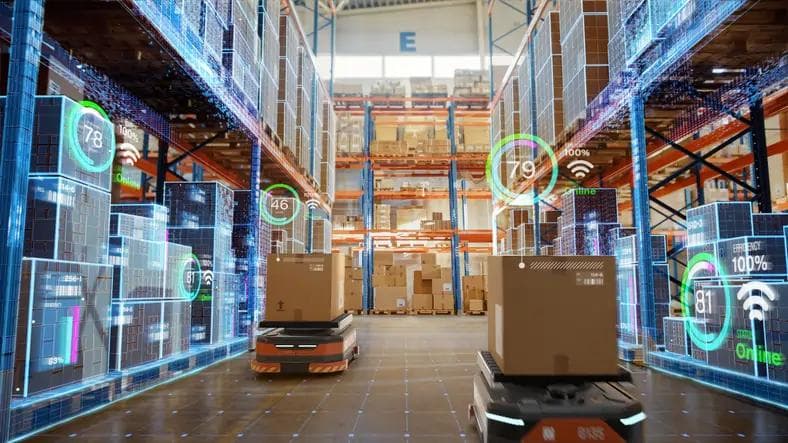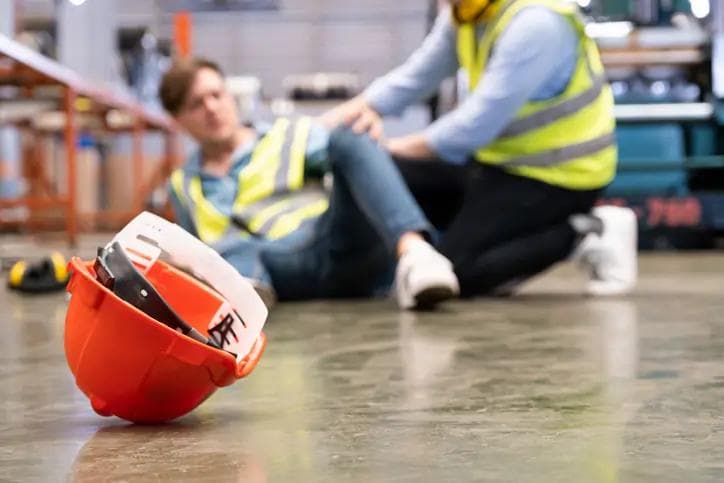Build Back Bluer
Build Back Bluer
Published by Jessica Weisman-Pitts
Posted on November 10, 2021

Published by Jessica Weisman-Pitts
Posted on November 10, 2021

By Karen Sack, Executive Director and Co-Chair of the Ocean Risk and Resilience Action Alliance (ORRAA)
As you read this, world leaders and business leaders alike are debating the future of our planet at the COP26 Conference in Glasgow. Billed as the “last chance to prevent global heating” the climate change summit is one of the most heavily anticipated of recent times.
Of course, sustainability, climate change and ESG have become key focal points for governments and corporations the world over in the last few years. While encouraging, there is a long way to go if we are to meet the 1.5 target established under the Paris agreement.
One vital asset we have in the fight against the climate crisis is the Ocean, yet it is largely ignored in contrast to the attention given to more terrestrial nature-based solutions. It is the planet’s largest carbon sink and has absorbed more than 90 per cent of the heat from carbon emissions with significant negative impacts on its biochemistry and biodiversity. Marine and coastal natural capital are also critical resilience buffers, reservoirs of biodiversity and provide food, social and economic security to billions.
It is the planet’s largest carbon sink and many of its natural ecosystems – from mangroves and sea grasses to seaweed and salt flats – help protect coastal communities from extreme weather events and sea level rise. Despite playing an instrumental role in mitigating and building resilience to climate change, it is in crisis.
Heating, leading to extreme weather events, sea level rise, changes in marine biochemistry with adverse and significant ecosystem changes alongside pollution, overfishing, acidification and biodiversity loss, all jeopardise the health of the Ocean.
It also has huge implications for the billions of people who rely on it as a source of food, income and economic security, particularly coastal communities in Developing Countries and Small Island Developing States (SIDS). The latter sees a fraction of the US$100 billion target of climate finance aimed for by COP26. According to the recent OECD report on Climate Finance and the US$100 Billion Goal, just US$1.5 billion of climate finance was directed towards SIDs in 2019 – a decline from 2017 levels following a small increase in 2018. It makes little sense that these countries and territories receive such disproportionately low funding when their coasts are on the frontline of climate change.
In fact, Sustainable Development Goal 14 Life Below Water, is the least financed of the UN Goals, receiving just 1% of total climate finance.
The disparities don’t end with funding. According to a series of new Ocean Risks reports commissioned by the Ocean Risk and Resilience Action Alliance (ORRAA) and undertaken by the Stockholm Resilience Centre at Stockholm University, the majority of the economic returns generated by the ocean economy don’t benefit SIDS or Least Developed Countries (LDCs). As the ocean economy has largely focused on extractive industries – such as oil and gas, industrial fisheries and human made infrastructure – returns largely benefit those in the developed world, despite 19% of the world’s coastline belonging to the 62 states that make up SIDS and LDCs. Very few of the 100 largest corporate beneficiaries of ocean use are headquartered in SIDS or LDCs.
Not only do SIDS and LDCs largely miss out on the financial benefits of the ocean economy, they are also more susceptible to the harmful impacts of climate change.
However, with the right funding mechanisms and guardrails in place, we can create a more equitable and sustainable ocean economy – that benefits coastal communities not only economically but in building resilience and protection against climate change via investment in ocean-focused, nature-based solutions.
As efficient and cost effective resilience builders, biodiversity reservoirs and carbon sinks, marine and coastal ecosystems offer a natural defence against the effects of climate change and resulting natural disasters. Yet, in order to realise this potential, we must channel more investment into protecting and maintaining them – and that requires collaboration and innovation.
The main finding of the Ocean Risks reports is that collective action is needed, involving local communities, governments and public and private finance if we are to create a Blue Economy – a truly sustainable and equitable ocean economy. Rather than consider them a homogenous region, the unique and complex risks faced by SIDS and LDCs must be better understood – and coastal communities must have both a voice and a hand in the determining and developing of solutions. Added to this, blended finance has an essential role to play but it must take a sustainable rather than a returns-only approach.
To date, some progress has been made; we are seeing the creation and deployment of more innovative financial products, including blue bonds, blue carbon and resilience credits and blue accelerator funds and the insurance sector is applying tools from micro-insurance for small-scale fishers to parametric insurance products for coral reefs and mangroves, to protect natural ecosystems and help build resilience.
It represents a positive step forwards, but there’s work to be done, particularly if efforts to create a new blue, nature positive asset class are to match those of the ‘green’ variety. Investment into our ocean and coasts is central to providing long term food security, stabilising livelihoods and building resilience for coastal communities.
To this end, ORRAA recently launched its #BackBlue Ocean Finance Commitment – a United Nations-backed initiative designed to incorporate the Ocean into finance and insurance decisions. Signed by financial institutions including AXA, Willis Towers Watson and Palladium, the commitment represents the start of a new way – and one we hope will gain momentum in Glasgow. To ensure a healthy and sustainable ocean, we must all come together and #BackBlue.
Karen Sack, Executive Director and Co-chair Ocean Risk and Resilience Action Alliance (ORRAA)
By Karen Sack, Executive Director and Co-Chair of the Ocean Risk and Resilience Action Alliance (ORRAA)
As you read this, world leaders and business leaders alike are debating the future of our planet at the COP26 Conference in Glasgow. Billed as the “last chance to prevent global heating” the climate change summit is one of the most heavily anticipated of recent times.
Of course, sustainability, climate change and ESG have become key focal points for governments and corporations the world over in the last few years. While encouraging, there is a long way to go if we are to meet the 1.5 target established under the Paris agreement.
One vital asset we have in the fight against the climate crisis is the Ocean, yet it is largely ignored in contrast to the attention given to more terrestrial nature-based solutions. It is the planet’s largest carbon sink and has absorbed more than 90 per cent of the heat from carbon emissions with significant negative impacts on its biochemistry and biodiversity. Marine and coastal natural capital are also critical resilience buffers, reservoirs of biodiversity and provide food, social and economic security to billions.
It is the planet’s largest carbon sink and many of its natural ecosystems – from mangroves and sea grasses to seaweed and salt flats – help protect coastal communities from extreme weather events and sea level rise. Despite playing an instrumental role in mitigating and building resilience to climate change, it is in crisis.
Heating, leading to extreme weather events, sea level rise, changes in marine biochemistry with adverse and significant ecosystem changes alongside pollution, overfishing, acidification and biodiversity loss, all jeopardise the health of the Ocean.
It also has huge implications for the billions of people who rely on it as a source of food, income and economic security, particularly coastal communities in Developing Countries and Small Island Developing States (SIDS). The latter sees a fraction of the US$100 billion target of climate finance aimed for by COP26. According to the recent OECD report on Climate Finance and the US$100 Billion Goal, just US$1.5 billion of climate finance was directed towards SIDs in 2019 – a decline from 2017 levels following a small increase in 2018. It makes little sense that these countries and territories receive such disproportionately low funding when their coasts are on the frontline of climate change.
In fact, Sustainable Development Goal 14 Life Below Water, is the least financed of the UN Goals, receiving just 1% of total climate finance.
The disparities don’t end with funding. According to a series of new Ocean Risks reports commissioned by the Ocean Risk and Resilience Action Alliance (ORRAA) and undertaken by the Stockholm Resilience Centre at Stockholm University, the majority of the economic returns generated by the ocean economy don’t benefit SIDS or Least Developed Countries (LDCs). As the ocean economy has largely focused on extractive industries – such as oil and gas, industrial fisheries and human made infrastructure – returns largely benefit those in the developed world, despite 19% of the world’s coastline belonging to the 62 states that make up SIDS and LDCs. Very few of the 100 largest corporate beneficiaries of ocean use are headquartered in SIDS or LDCs.
Not only do SIDS and LDCs largely miss out on the financial benefits of the ocean economy, they are also more susceptible to the harmful impacts of climate change.
However, with the right funding mechanisms and guardrails in place, we can create a more equitable and sustainable ocean economy – that benefits coastal communities not only economically but in building resilience and protection against climate change via investment in ocean-focused, nature-based solutions.
As efficient and cost effective resilience builders, biodiversity reservoirs and carbon sinks, marine and coastal ecosystems offer a natural defence against the effects of climate change and resulting natural disasters. Yet, in order to realise this potential, we must channel more investment into protecting and maintaining them – and that requires collaboration and innovation.
The main finding of the Ocean Risks reports is that collective action is needed, involving local communities, governments and public and private finance if we are to create a Blue Economy – a truly sustainable and equitable ocean economy. Rather than consider them a homogenous region, the unique and complex risks faced by SIDS and LDCs must be better understood – and coastal communities must have both a voice and a hand in the determining and developing of solutions. Added to this, blended finance has an essential role to play but it must take a sustainable rather than a returns-only approach.
To date, some progress has been made; we are seeing the creation and deployment of more innovative financial products, including blue bonds, blue carbon and resilience credits and blue accelerator funds and the insurance sector is applying tools from micro-insurance for small-scale fishers to parametric insurance products for coral reefs and mangroves, to protect natural ecosystems and help build resilience.
It represents a positive step forwards, but there’s work to be done, particularly if efforts to create a new blue, nature positive asset class are to match those of the ‘green’ variety. Investment into our ocean and coasts is central to providing long term food security, stabilising livelihoods and building resilience for coastal communities.
To this end, ORRAA recently launched its #BackBlue Ocean Finance Commitment – a United Nations-backed initiative designed to incorporate the Ocean into finance and insurance decisions. Signed by financial institutions including AXA, Willis Towers Watson and Palladium, the commitment represents the start of a new way – and one we hope will gain momentum in Glasgow. To ensure a healthy and sustainable ocean, we must all come together and #BackBlue.
Karen Sack, Executive Director and Co-chair Ocean Risk and Resilience Action Alliance (ORRAA)
Explore more articles in the Business category











